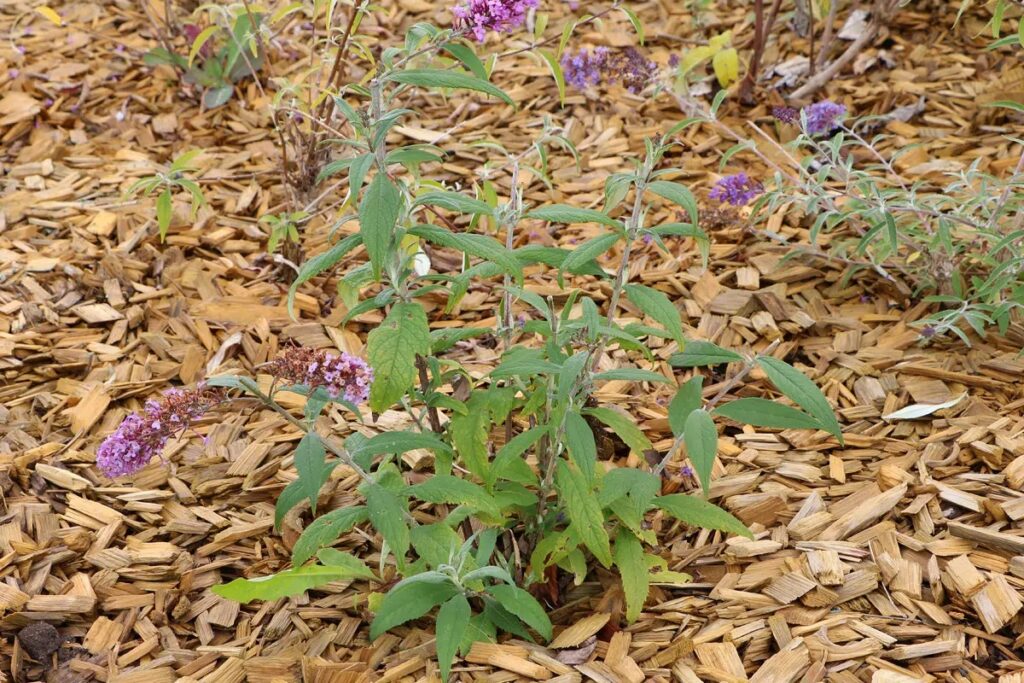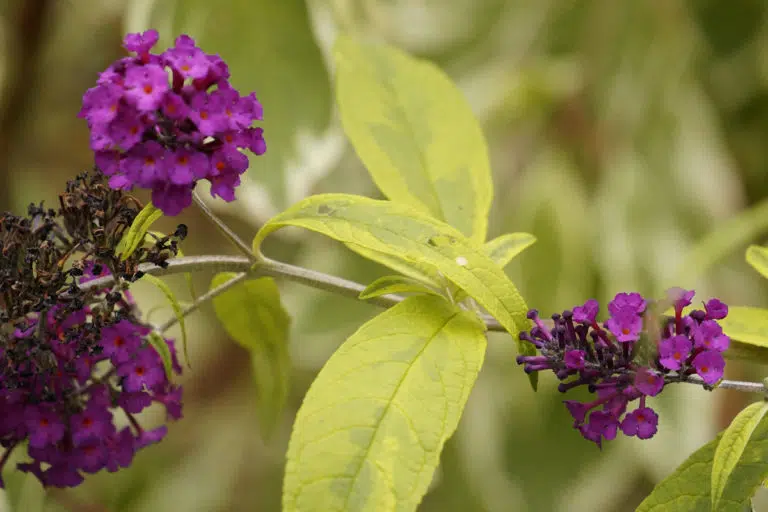If your buddleia droops its leaves, numerous causes can be the trigger for this problem. With the solutions listed here, you can get your buddleia back on track.
Contents
Incorrect planting
The most common cause of a buddleia, which repeatedly presents drooping foliage, is incorrectly executed planting. Although buddleia is not really demanding, you still need to consider some points, first of all, the location and soil. Butterfly lilac should not be placed too dark, narrow or close to other woody plants. For this reason, solitary planting or a place in sparse hedges is best for the plant. The location should be as follows, so that the leaves of the buddleia did not droop:
- Light requirement: sunny to light partial shade
- warm
- sheltered from wind
- no north exposure
- planting distance (perimeter): 100 to 150 cm
Of course, the location is as important as the soil. Fortunately, the butterfly bush shows itself to be frugal in this aspect. Neither a specific pH or type is desired. Only wet and compacted soils should be avoided. Better suited are:
- lean to slightly nutrient-rich
- loose
- permeable
If necessary, you can loosen the soil with sand or gravel. If the buddleia is to be transplanted to improve the site, this should not be done during flowering or a new shoot. Suitable times are:

- Mid-September to October
- Mid-February to mid-April
Cut it back beforehand so that the shrub can grow well. About two-thirds will do. This will ensure that it will not be too strenuous for the specimen.
Drought
As dangerous as waterlogging can be, the plant should not have to suffer continuous drought. Drought stress can show on downward-facing leaves and flowers of buddleia. Since lilacs should only be watered as needed, it is especially important to check the location regularly during the summer. To do this, use the thumb test for specimens in containers. Alternatively, you can water daily according to the following pattern:
- do not water at midday
- water as needed
- use water with low lime content (e.g. rainwater)
- do not water when it rains
- optional: create mulch layer in spring
- materials: compost, humus, straw-green cuttings mixture
- protects from drying out
Lack of nutrients
A buddleia is not a hungry plant. Nevertheless, if you have neglected to give the plant a nitrogen fertilizer in the spring, problems may arise in the summer. Drooping foliage and weak growth are the result. You can help the plant along with a slow-release fertilizer for flowering plants or compost with a little liquid fertilizer, especially if they are planted out. Potted plants, on the other hand, are supplied with liquid fertilizer every two weeks during the growing season, which is administered via the watering water.
Waterlogging
A wet location is devastating to the plant’s vitality and should be changed as soon as possible. One reason could be continuous rainfall, excessive watering, insufficient space, an incorrect or compacted soil. Waterlogging can be recognized by the following symptoms:
- Leaves drooping
- Flowers drooping
- Plant weakens
- Soil smells musty
- Soil is permanently wet
Waterlogging leads to rotting roots and, in the worst case, fungal infection that can spread to the trunk. If this is the case, the buddleia can no longer be saved and must be disposed of. As soon as waterlogging is suspected, you need to act quickly and carefully remove the butterfly bush from the soil. Be careful not to damage the roots when removing the root system from the wet substrate. Damaged roots will cause the leaves on the butterfly bush to droop. For this reason, inspect the root ball for rotten, damaged, dried out or dead roots. Remove them completely and allow the roots to dry out completely. You can then prepare the planting hole in the following manner before replanting the buddleia:
- Create drainage
- Drainage material: gravel
- Improve soil
- Incorporate sand, compost or gravel
Over the next few days, check the site for dryness. As soon as the top layer has dried, water. At this point, the risk of further waterlogging should be over. The same procedure is recommended for butterfly bushes in pots, after the plant has been freed from the substrate:
- if necessary, select a larger pot
- pot must have drainage holes
- fill with fresh substrate
- substrate: 1 part soil, 1 part drainage material
- soil: potting soil, pot plant soil
- Drainage material: gravel, expanded clay
- Mix substrate well
- fill in
- pot
Damage due to frost
Do not underestimate cold weather when it comes to butterfly bush. Especially late frosts are a dangerous matter for the plant, since the new shoots are already on their way. You can tell in June if your buddleia has suffered frost damage over the spring by the following symptoms:
- Leaves curl up
- hang down
- subsequently dry up
Late frosts are especially dangerous for young plants, as they are not yet so robust. Cut back the infested shoots to the healthy wood. Remove shoots a few millimeters above a healthy leaf shoot or bud.
Lack of pruning care
Buddleia need to be pruned annually to maintain the plant’s vigor. If either of these dates is missed in the spring or winter, the crown can grow significantly too dense the following season, which can quickly become a problem. This can lead to drought stress or an increased nutrient deficiency. As a result, drooping leaves can be seen on the buddleia. To prevent this problem, pruning in the spring is recommended. Although you will have to put up with flowering a little later, the butterfly bush will be much healthier as a result. Pruning is done in the usual way.
Pest: aphids

Among the most dangerous pests for the buddleia are aphids. The pests rob the plant of a lot of energy and permanently weaken it, resulting in drooping leaves. In most cases, aphidoids inhabit specimens that suffer from drought stress. In addition to the weakening foliage, infestation by the aphids can be recognized as follows:
- Leaves turn yellow
- Aphids can be seen on the plant
- Plants weaken
- Honeydew visible
- Ants settle in the immediate vicinity
Remove the aphids daily with a hard stream from the garden hose or wipe the infested shoots and leaves with a home remedy. To do this, use a mixture of one liter of water and 20 to 50 milliliters of soft soap, which you then pour into a spray bottle or apply with a cloth. It is important that you carry out the procedure at weekly intervals to prevent a new infestation. Depending on the intensity of the infestation, you can remove the infested greenery to immediately contain the colony of insects.
Pest: Greenhouse moth scale.
Like aphids, the larvae of the greenhouse moth scale (Trialeurodes vaporariorum) pose a problem. The pest is also known as whitefly. It lays its eggs under the leaves, whereupon the larvae hatch and suck on them. As a result, the leaves of the buddleia droop and turn yellow at a rapid rate. In addition, the buddleia weakens with increasing intensity. Infestations are more common in greenhouses, conservatories, and general enclosed spaces. Check the leaves for the young and remove them. Other steps include:
- Hang up yellow sheets
- Wipe leaves with soft soap or canola oil solution
- Remove and dispose of leaves with eggs
- Use nematodes or predators such as ichneumon wasps (in the greenhouse)


